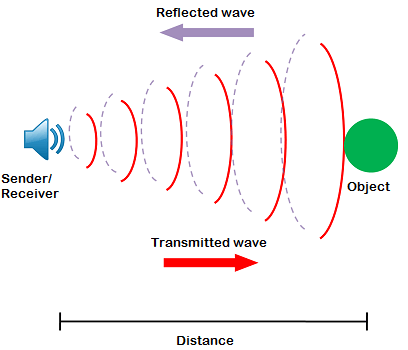
\[(1)\]What is an echo?
\[(2)\]State two conditions for an echo to take place.
Answer
581.7k+ views
Hint: In this question we will define what is echo and how an echo is developed. Then we will discuss the conditions necessary for developing an echo like time taken by the reflected sound wave and minimum distance between the obstacle and listener. Keep in mind that echo is reflection of sound waves so we will need properties of sound waves also.
Complete solution:
\[(1)\] When we refer to what is an echo and how an echo is taking place we can see that echo is a reflection of a sound wave that arrives at the listener with a delay after the direct sound wave. This delay in the sound wave is directly proportional to the distance of the reflecting surface from the source and the listener.

There are many examples for an echo which we can recreate or could be seen in our daily life. Sound waves reflected when we make noise inside a well, by large buildings, hills or by the walls of an enclosed room can all be taken as examples of echo. We wonder when we realize that even some animals like dolphins and whales use echo for location sensing from where the technology of SONAR is obtained.
\[(2)\] We must know that there are certain conditions which should be satisfied for an echo to take place. They are,
\[a)\] There must be a presence of a rigid reflecting surface. Only by which the sound wave will be reflected. The size of this reflector must be large enough when compared to the wavelength of the sound wave.
\[b)\] The distance between the sound source and the reflecting surface should be having a minimum distance of \[17m\]. This is because the velocity of sound in dry air is \[343m/s\] at a temperature of \[25{}^\circ C\].
\[c)\] The time period between hearing the original sound and its echo must be less than \[0.1s\]. This condition is necessary because the human ear cannot distinguish successive sounds if they are in a period inside \[0.1s\].
Note: if the conditions for an echo to be created is not satisfied, for example if the minimum distance is twice or thrice of \[17m\], then echo will be heard from the last two or three phases of the original sound. We must know that a true echo is a single reflection of the original sound wave.
Complete solution:
\[(1)\] When we refer to what is an echo and how an echo is taking place we can see that echo is a reflection of a sound wave that arrives at the listener with a delay after the direct sound wave. This delay in the sound wave is directly proportional to the distance of the reflecting surface from the source and the listener.

There are many examples for an echo which we can recreate or could be seen in our daily life. Sound waves reflected when we make noise inside a well, by large buildings, hills or by the walls of an enclosed room can all be taken as examples of echo. We wonder when we realize that even some animals like dolphins and whales use echo for location sensing from where the technology of SONAR is obtained.
\[(2)\] We must know that there are certain conditions which should be satisfied for an echo to take place. They are,
\[a)\] There must be a presence of a rigid reflecting surface. Only by which the sound wave will be reflected. The size of this reflector must be large enough when compared to the wavelength of the sound wave.
\[b)\] The distance between the sound source and the reflecting surface should be having a minimum distance of \[17m\]. This is because the velocity of sound in dry air is \[343m/s\] at a temperature of \[25{}^\circ C\].
\[c)\] The time period between hearing the original sound and its echo must be less than \[0.1s\]. This condition is necessary because the human ear cannot distinguish successive sounds if they are in a period inside \[0.1s\].
Note: if the conditions for an echo to be created is not satisfied, for example if the minimum distance is twice or thrice of \[17m\], then echo will be heard from the last two or three phases of the original sound. We must know that a true echo is a single reflection of the original sound wave.
Recently Updated Pages
Master Class 11 Chemistry: Engaging Questions & Answers for Success

Why are manures considered better than fertilizers class 11 biology CBSE

Find the coordinates of the midpoint of the line segment class 11 maths CBSE

Distinguish between static friction limiting friction class 11 physics CBSE

The Chairman of the constituent Assembly was A Jawaharlal class 11 social science CBSE

The first National Commission on Labour NCL submitted class 11 social science CBSE

Trending doubts
What is meant by exothermic and endothermic reactions class 11 chemistry CBSE

10 examples of friction in our daily life

One Metric ton is equal to kg A 10000 B 1000 C 100 class 11 physics CBSE

Difference Between Prokaryotic Cells and Eukaryotic Cells

What are Quantum numbers Explain the quantum number class 11 chemistry CBSE

1 Quintal is equal to a 110 kg b 10 kg c 100kg d 1000 class 11 physics CBSE




